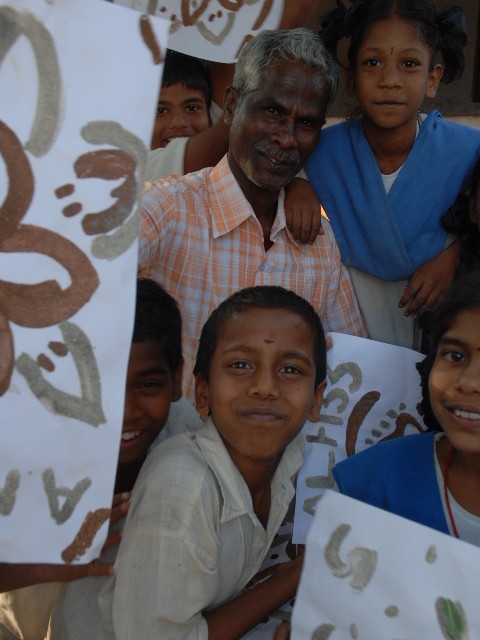A visit to the Ashram and city of Bhagavan Ramana Maharshi.
It’s difficult to describe how it feels to be in a spiritual place like Tiruvannamalai, just as it is difficult to write about spirituality and the search for the “self” and eternal truth. When I try, and I think of getting closer to describing the exact feeling and sensation, the further away I actually find myself from the real truth and actual goal. Maybe its true, as the teachings say, that there shouldn’t be a thing such as a fixed goal or objective in the search for the mindless inner self, and describing the spiritual path only becomes an obstacle in the search for one’s true being, or Mouna (silence) as it is called by Ramana.
Therefore maybe “no description and only silence” is the best way to tell how it feels to be in the presence of the remaining energy of Ramana and and this mystical mountain Arunachala that awakens over Tiru. and where Sree Ramana meditated in 2 caves for more than 20 years (1899-1922).
Therefore I think its is better you listen, preferably in a meditative state of mind, to the Chantings that are daily performed by a lonely and devoted Swami in the Skandashram cave where Ramana remained for 7 years. Every morning this monks walks up “the mountain path” to light a ghee-candle and some incense in the cave and chant with deep devotion and tenderness the Tamil prayers that are dedicated to Ramana.
The chantings of deep spiritual power might help one reach deep concentration, silence and ultimately truth….
Just sit down in a comfortable position, close your eyes and let everything go… become ‘Mouna’, become silence yourself…
(music file will be uploaded shortly)
The red mountain, that awakens over Tiru, also know as Sonachalam or Arunachala is surrounded by many magnificent ancient temples where daily rituals and pooja’s remember the story of Brahma (the creator) and Vishnu (the maintainer) who got into a quarrel about who was the best.. Siva put them on a test, but neither of them was able to fulfill the task of approaching the intense light and burning fire on top of the mountain…. Vishnu became a mole and tried to reach the roots of the mountain to discover the source of the light… Brahma became a bird and tried to reach the top to find out, but both were unable to fulfill the task, it was just to difficult.. When they came back to Siva and Vishnu recognized that he couldn’t reach the goal, Brahma thought of a lie and said that he did reach the top…. But Siva knew he was lying and threatened to destroy Brahma for his dishonesty… Brahma begged to be pardoned and Siva finally conceded to his pleas and decided in a different way. He punished Brahma with only 1 Temple dedicated to him on Hindu soil..
Down the slopes of Arunachala, at a short but intense 30 minutes walk down from the caves where Ramana remained in “Samadhi” (deep spiritual trance) for more than 20 years, one finds the massive Arunachala Temple that awaits patiently in the quivering heat of the Indian low lands. The temple is the living remembrance and symbolic reality of the spiritual power that many perceive in the presence of this old extinct volcano; dedicated to Siva (the destroyer). Every month at full moon hundreds of thousand of devoted pilgrims perform an impressive ritual and walk bare footed the 14 km stretch of roads and ‘inner paths’ around the mountain. Some do it 3 times to even stronger feel the presence of their god…. I did it only ones…

































































































